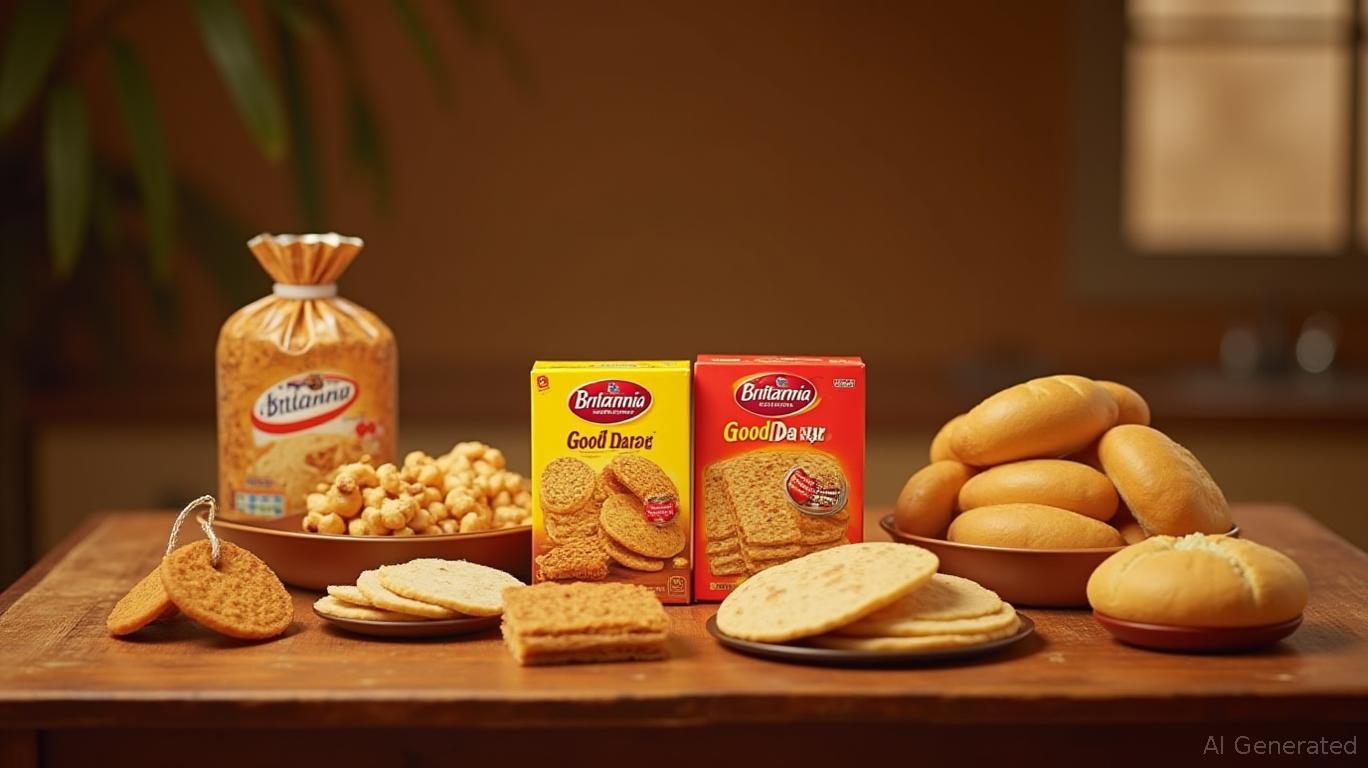Britannia Industries: Navigating Short-Term Hurdles to Long-Term Rewards
The recent strike at Britannia Industries' Jhagadia plant—a fleeting disruption resolved within days—has provided a stress test for the company's operational resilience. While the incident briefly rattled investor sentiment, the swift resolution underscores Britannia's ability to manage risks in a dynamic market. For investors, this episode highlights a critical opportunity: a near-term dip in share price now creates a compelling entry point into a consumer staples giant with robust fundamentals and a track record of growth. Let's dissect why the short-term volatility is overshadowed by long-term promise.

Transient Operational Hurdles vs. Proven Demand Management
The strike at the Jhagadia plant, which began on March 24, 2025, and was resolved by March 25, caused only partial operational disruptions. Britannia's immediate response—leveraging existing inventory and cross-plant coordination—demonstrated the strength of its decentralized production network. With 12+ manufacturing facilities nationwide, the company's geographic and operational diversification limits overreliance on any single site. This agility is critical in an industry where supply chain shocks are inevitable.
The 0.4% dip in shares on the strike's announcement and a 1% drop the following day reflect short-term market sensitivity, but the swift resolution suggests no lasting damage to production or delivery. . The chart will reveal the YTD decline of 23%, creating a valuation trough that contrasts sharply with the company's consistent profit growth.
Financial Fortitude Amid Margin Pressures
Britannia's Q3FY25 results, released in late 2024, underscored its financial stability. A 4.8% year-on-year rise in net profit to ₹582.3 crore, coupled with 7.9% revenue growth to ₹4,592.6 crore, reflects sustained demand for its snacks and bakery products. While EBITDA margins dipped slightly to 18.4%, this contraction is likely temporary, attributable to input cost pressures and operational adjustments. The company's focus on cost optimization and pricing discipline will likely stabilize margins in the coming quarters.
Analysts, noting these trends, maintain a consensus "Buy" rating, with a 10% upside target from current levels. The stock's price-to-earnings (P/E) ratio of ~32x, below its five-year average of 38x, signals undervaluation relative to its growth trajectory.
Why the Long-Term Outlook Remains Sunny
- Consumer Staples Resilience: Britannia's products are staples in Indian households, with inelastic demand even during economic fluctuations. The company's market share in biscuits and packaged bread remains unchallenged, insulating it from competitive pressures.
- Innovation and Expansion: Ongoing launches of healthier variants (e.g., low-sugar snacks) and regional product customization position Britannia to capitalize on evolving consumer preferences.
- Balance Sheet Strength: With net debt-to-equity at a conservative 0.2x, the company has ample liquidity to invest in R&D, automation, and geographic expansion.
The Investment Case: Buy Now, Harvest Later
The stock's 23% YTD decline has created a rare buying opportunity. While short-term risks—such as input cost volatility or labor disputes—cannot be dismissed, Britannia's record of resolving such challenges swiftly and its fortress-like balance sheet mitigate these concerns. The 10% upside target, supported by analyst forecasts and valuation multiples, suggests significant room for recovery.
. This visual will highlight Britannia's consistent margin stability compared to competitors, reinforcing its operational excellence.
Final Call: A Strategic Entry Point
Investors prioritizing stability in consumer staples should view the recent dip as a buying catalyst. Britannia's ability to weather disruptions while maintaining earnings momentum positions it as a defensive play with asymmetric upside. With a "Buy" rating and a 10% return potential, now is the time to capitalize on near-term pessimism and lock in exposure to a long-term growth story.
Action Item: Consider a phased entry into Britannia's stock at current levels, with a stop-loss below the recent low. The rewards of its enduring market leadership and undervalued equity far outweigh the risks of transient operational hiccups.
This analysis assumes no material changes in macroeconomic conditions or regulatory policies. Always conduct independent research or consult a financial advisor before making investment decisions.

Comments
No comments yet